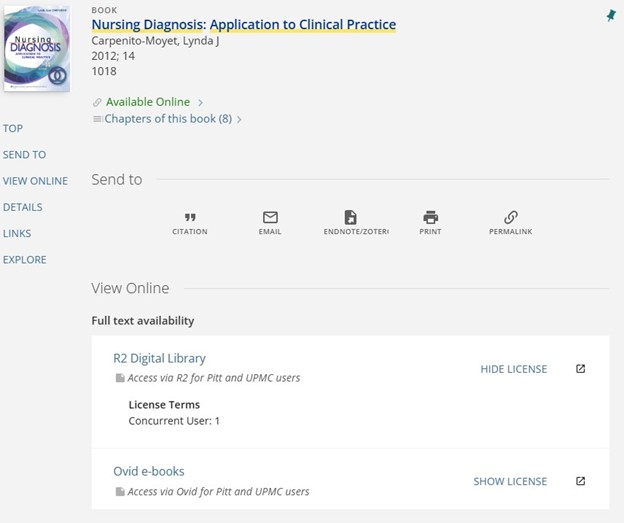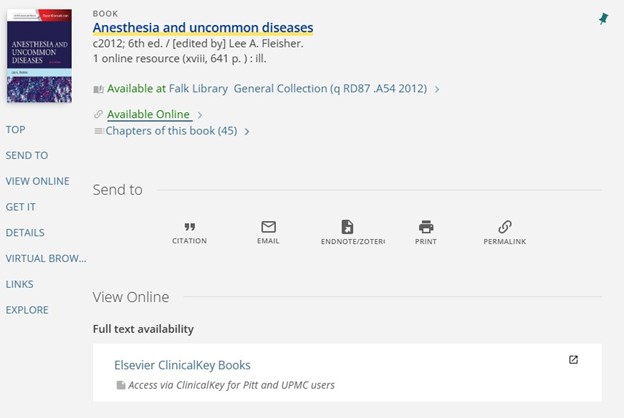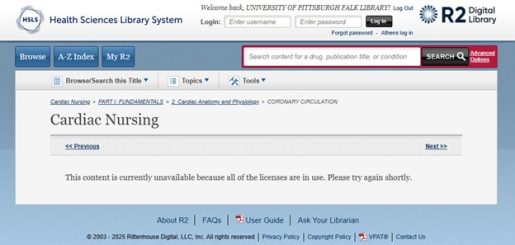Whether you are an instructor working to create reading assignments or a student digging into a research subject, it’s important to know how many e-book licenses are available. At Pitt and other university libraries, electronic versions of books are often purchased with a set number of user licenses.
In both the HSLS E-Books by Subject page and PittCat, you will notice that our links use the term “concurrent users.” This refers to the number of users that may view and read the book at the same time.
For instance, the book Nursing diagnosis: application to clinical practice is available via two different providers. Looking at the HSLS e-books list, you will see the two access points cited like this:

In this case, Ovid allows unlimited concurrent users to view and read the book on their website, while R2 only allows one user at a time.
If looking up the same e-book in PittCat, the access points will look like this:

Click on “Show License” to see the concurrent user information. Here you can see the license for this particular R2 e-book allows one person to view and read. Please note that user limits can vary among e-books on the same platform.
There are some exceptions. Some e-book providers such as ClinicalKey are always “unlimited.” In this case, there won’t be any license information shown in PittCat:

Note how there is no license information on this ClinicalKey e-book. An unlimited number of concurrent users may view and read the e-book at once.
If all licenses are being used, each website will have a slightly different but clear message stating the limit has been reached and to try again soon. Here’s an example from the R2 website:

If you have any questions about e-book licenses, please contact HSLS!
~Ann Passmore